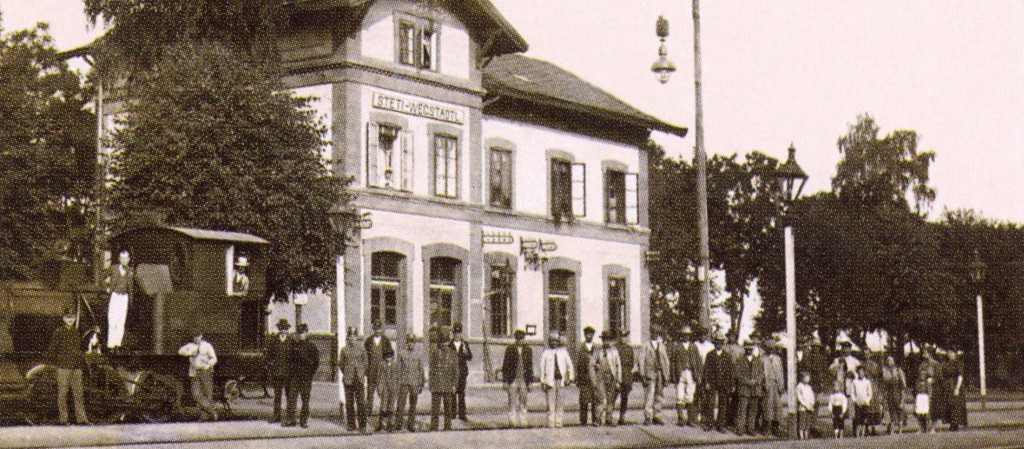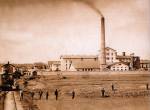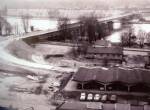
The educational journey of the robber Stetka
A nature trail around the surroundings of Štětí for the whole family, introducing the history and picturesque nature, industry and agriculture of Štetsko. The legendary robber Štětka and his four-member team are guiding the tour, giving information on a marked circuit starting from
In the old days of the Thirty Years' War, the robber Štětka was the master of the deep forests, fields and hillsides around the town of Štětí. Today, his home is the former Mordloch Cave, hidden away from people in the middle of the Stračen forests. Who knows him in the region. He protects the poor and honest, and justly punishes dishonesty and avarice. He has walked this land many times. He knows every road and footpath here.
During your adventurous journey with the robber Stetka you will come across educational boards that will tell you all about the history, nature, fauna and flora, industry and agriculture of the local region or visit the mythical cave Mordloch of the robber Stetka. You can also try out a discovery competition Following the footsteps of the robbers or robber geocaching.
Stops

Štětí, train station
RAIL TRANSPORT IN THE REGION OF STETTIN
Electrified railway lines run on both sides of the Elbe. The town of Štětí has two train stations - Štětí and Hněvice. Both are located at important railway junctions. Štětí on the Ústí nad Labem-Lysa nad Labem line, Hněvice on the junction connecting Ústí nad Labem and Prague.
Several years ago the local railway line became part of the important railway corridor Berlin - Prague - Vienna. During its total reconstruction and modernisation in 1999-2001, the platform of the Hněvice railway station with the underpass under the track was also completely rebuilt. At the same time, the road underpass was also rebuilt, which did not allow the passage of higher vehicles. According to the architectural decoration of the façade, the present station building dates back to the interwar period (1924).
Railway station Hněvice
The railway station in Hněvice was built and put into operation in 1851 as part of the left bank line from Prague to Podmokel. The station was first called Štětí, later it was called Štětí-Hněvice for several years, now it is called Hněvice station. In order to facilitate the connection with Štětí, a pontoon footbridge was laid on the Elbe, which was popularly called the "flying bridge" (German: fliegende Brucke). This rarity from Štětská served until the regulation of the Elbe riverbed began in 1908. For the next 65 years, only the good old ferry carried passengers again until the new reinforced concrete bridge was put into operation in 1973.
Tugboat to the paper mill
In 1883, a railway line was established from the Szczecin railway station to the sugar factory. The railway also served the paper mill that was later built there. Because it had too steep a slope, it was cancelled in the 1970s after the construction of a siding from the Hněvice railway station to the new bridge. The need for this siding for the paper mill was the main motive for the construction of the otherwise necessary bridge.
Passage of Franz Joseph I. through Hněvice
In the Chronicle of the RACICE School there is a record of the passage of the Emperor's train through the local station:
"In the month of June 1901, His Majesty, our most gracious Emperor and King, Franz Joseph I., paid a visit to his beloved Kingdom of Bohemia. After an extended stay in Prague, he travelled further north by rail. On 17 June he passed through the local railway station of Štětí-Hněvice, heading towards Roudnice and Terezín. Thanks to the efforts of all the leading citizens, the station was very nicely decorated, where, apart from the numerous citizens, school children, festively dressed and carrying numerous flags in the colours of the Land and the Reich with their teachers, came to take part in the festive welcome of the long-awaited landlord. Children and citizens from the school communities of Horní Počapel, Předonín and Račice gathered to welcome the landlord. Also the associations, such as the firemen and the retired soldiers, were fully represented. Soon after 8 a.m., shots from the mortars announced that the yard train had crossed the station entrance. The music played the imperial anthem, and all present shouted "Glory!" many times enthusiastically to the most noble potentate. The school children waved their flags joyfully and, supported by the music, sang the first verse of the imperial anthem.
The court train passed through the station quite slowly, so that all present could see the Emperor Pan quite clearly. His Majesty looked with evident pleasure at the decoration of the station and the school children, who were cheering with enthusiasm, and was obviously very pleasantly moved. It was only on leaving the station that the train began to move more rapidly... The festive imperial day ended here and left in the hearts of all the participants a pleasant and unforgettable impression and a happy memory of those brief but truly beautiful moments in showing respect and devotion to His Majesty..."



